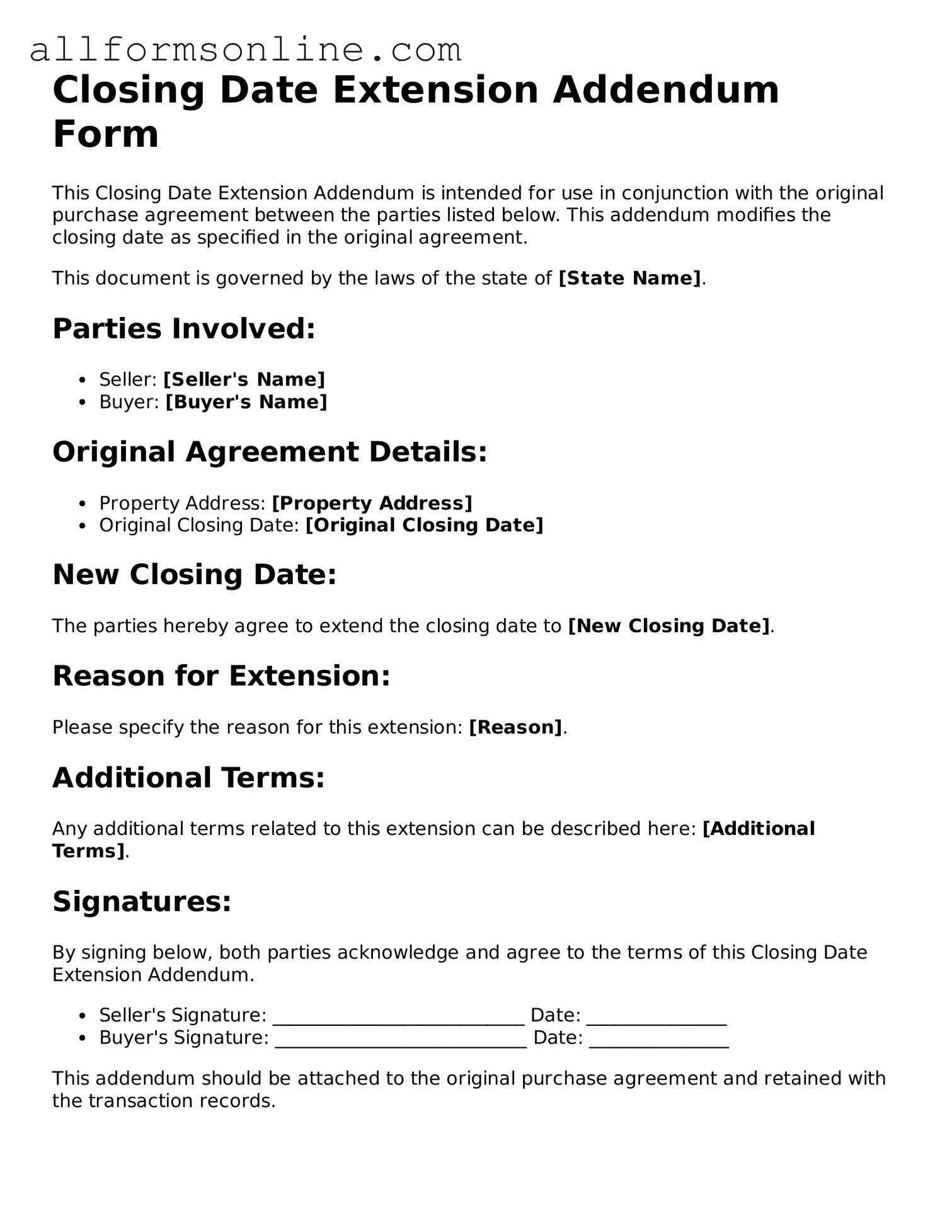What is a Closing Date Extension Addendum Form?
The Closing Date Extension Addendum Form is a legal document used in real estate transactions. It allows parties involved in the sale of a property to extend the closing date. This form is particularly useful when unforeseen circumstances arise, such as delays in financing or issues with inspections.
When should I consider using this form?
If you are involved in a real estate transaction and anticipate that you will not be able to close on the originally agreed-upon date, it is advisable to consider this form. Common reasons for needing an extension include delays in loan approval, unresolved inspection issues, or the need for additional time to finalize the sale.
Who needs to sign the Closing Date Extension Addendum Form?
All parties involved in the real estate transaction must sign the form. This typically includes the buyer, the seller, and possibly their respective real estate agents. Each party's agreement to the new closing date is crucial for the extension to be valid.
How long can the closing date be extended?
The length of the extension can vary based on the agreement between the parties. There is no set limit, but it should be reasonable and reflect the time needed to resolve the issues causing the delay. It is essential to communicate openly about how much additional time is necessary.
What happens if the closing date is not extended?
If the closing date is not extended and the parties do not close on the scheduled date, it could lead to various consequences. These may include potential breaches of contract, loss of earnest money deposits, or legal disputes. Therefore, it is crucial to address any potential delays as soon as possible.
Is there a fee associated with using this form?
Generally, there is no specific fee for using the Closing Date Extension Addendum Form itself. However, there may be costs associated with any additional negotiations or changes in the transaction. It is wise to discuss any potential fees with your real estate agent or attorney.
Can I use this form for any type of real estate transaction?
This form is primarily designed for residential real estate transactions. However, it can also be adapted for commercial transactions, depending on the specific circumstances and agreements between the parties. Always ensure that the form meets the requirements of your particular situation.
What if one party does not agree to the extension?
If one party does not agree to the extension, the original closing date will remain in effect. It is essential for both parties to come to a mutual agreement. Open communication is key to resolving any disagreements and finding a solution that works for everyone involved.
How do I complete the Closing Date Extension Addendum Form?
To complete the form, fill in the necessary details, including the original closing date, the new proposed closing date, and any relevant conditions. Both parties must review the document carefully before signing. If you have any questions during this process, consulting with a real estate professional is recommended.
What should I do after the form is signed?
After the form is signed by all parties, it should be kept with the original purchase agreement. Make sure to provide copies to all parties involved. This ensures everyone is on the same page regarding the new closing date and any conditions that may apply.
